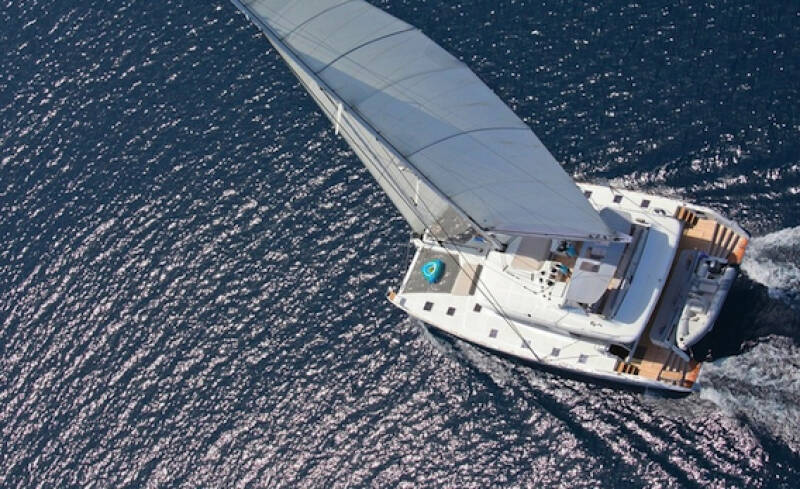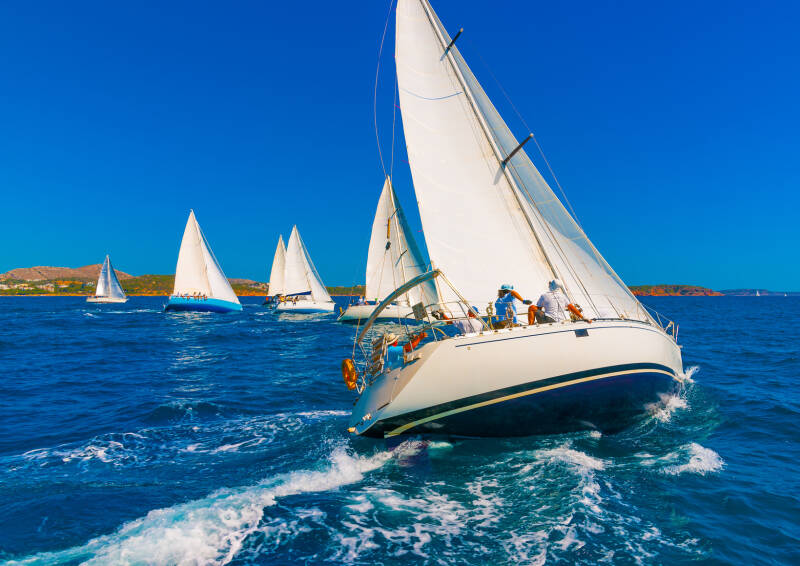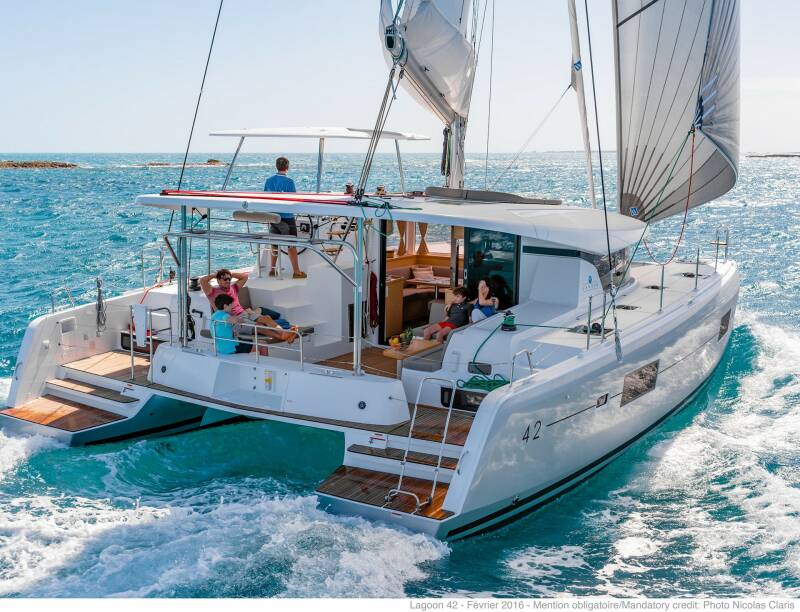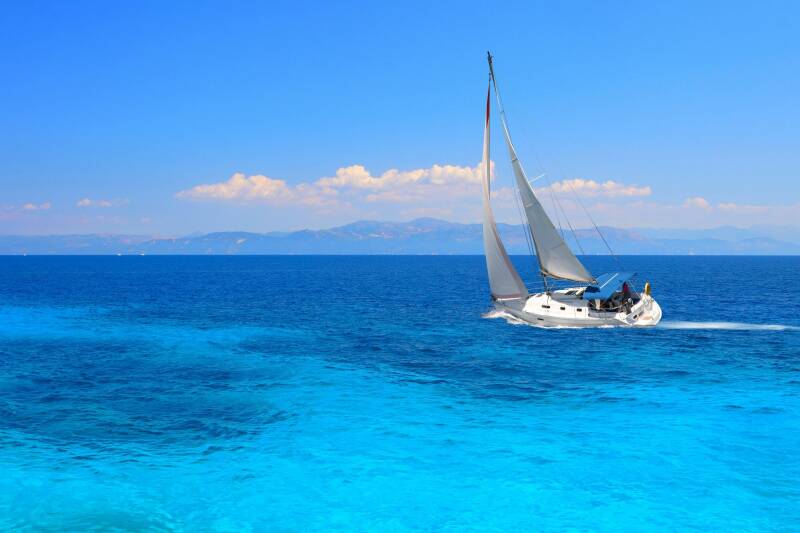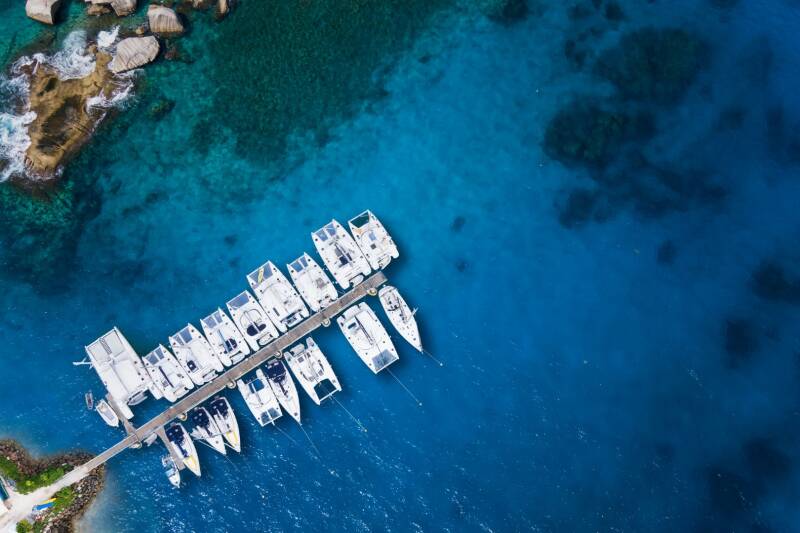Are you considering sailing on a catamaran or a monohull? Read this article to explore the pros and cons and find the answers you are looking for. If you have not yet tried sailing on a catamaran but are interested, the following list of differences between monohulls and catamarans may help you decide which one to charter.
Catamaran charters have become very popular due to several essential characteristics. The great buoyancy enables the entire boat to act as sort of a raft. Catamarans have great manoeuvrability since most catamarans have twin engines, so they can be more comfortable to dock than a single-engine monohull. Modern catamarans can do a 360 turn in their length.
In contrast, monohulls might provide you with more of a “real sailing” feeling, more thrills and exciting moments. Adrenalin junkies would love hanging on the side of a sailing yacht, while it is heeling under 25° under full sails.
Monohulls are offering a specific sailing charm for real sailing enthusiasts.
But don’t get the wrong impression, monohulls are not just for hard-core sailors. They have a comfortable salon area, spacious cabins, and areas for sunbathing and other activities. On the other hand, charter clients who tend to sail during the peak of the season are putting more value on spaciousness, comfort, and stability than the ones who are sailing during pre/post-season when sailing conditions are more favourable. It could be that the popularity of multihulls lies in those facts.
Spaciousness & Comfort
First on the list of catamaran vs monohull characteristics is spaciousness, in favour of the catamaran. More cabins, a larger salon area and more extensive areas for sunbathing than on a monohull of the same length. If you prefer comfort and more space, multihulls are your go-to yachts for sailing vacations.
Large net areas on the bow of a boat provide you with a unique feeling while lying on them during your sailing trip or when soaking up the sun while anchored in a lovely bay. With all that additional width, cockpit areas on multihulls are offering massive amounts of space making them ideal for a large family meal or an exclusive party area.
There are also owner’s versions of the multihulls where one whole hull is dedicated to the owner, resulting in an impressive size suite on the boat, which will satisfy the most demanding ones.
Next on the catamaran vs. monohull list of pros and cons is the fact that multi-hulls are offering more stability, which is ideal for families with kids - especially while walking around the yacht since all areas are more extensive than on a monohull yacht. There is no heeling under a 25° angle when the sails are up, so boat guests can enjoy and even prepare their food and drinks while sailing.
Most of the multihulls have a separate flybridge with nice, shaded areas for enjoying the ride or a drink, and it can also convert into sunbathing areas. The separated flybridge also means a complete separation of skippers that provides maximum privacy for yacht guests or owners.
A separated skipper cabin could be found on almost every multihull. On the larger ones, those skipper cabins have full equipment (toilet, sink, shower, etc.), leading toward complete separation of a crew and yacht guests in case that is necessary.
Pounding and Slapping
Multihulls such as catamarans and trimarans are deriving their popularity from the fact that most of them are created for extracting maximum pleasure out of your vacation at sea. However, there is one advantage most monohulls have compared to catamarans, and that is when underway is that they do not pound or slap. Catamarans with low bridge deck clearance tend to hit and slap on the undercarriage in lumpy seas when sailing upwind. This may sometimes feel as though the boat is getting beaten to pieces.
Speed Difference
Catamarans are in most sailing conditions faster than monohulls, because of their hulls which are less immersed in the water and have a smaller area in the water to create drag. Multihulls are unusually fast when sailing downwind for the reasons just mentioned above. When sailing downwind they are faster than monohulls, but when they are cruising windward, close-hauling monohulls are usually faster.
Manoeuvring & Docking
When talking about catamarans vs. monohulls, when it comes to manoeuvring and docking; monohull sailing yachts are propelled just by one engine which can combine with a bow thruster on the front. The bow thruster is a small electric engine on the bow of the yacht enabling it to move bow sideways by the press of a button, providing additional skipper security and making it easier to manoeuvre in tight spaces.
Two engines propel multihulls. Two engines can be significant in case of emergency when one of the engines fails, but they are also great for manoeuvring in tight spaces. Two engines are enabling the skipper to rotate the yacht for practically 360 degrees at one point, meaning very little manoeuvring space is necessary for a large and wide yacht to dock.
Catamaran vs. Monohull Yacht – the Final Verdict
In the end, we are back to personal preferences and finance, especially when choosing a catamaran vs. a monohull. Catamarans are more expensive to buy/rent and to moor/dock, but they offer a lot for their price. They provide an extraordinary sailing sensation filled with luxury, for individuals and families looking to spend their vacation at sea, sailing while wining, dining and enjoying the sun. We have to make it clear that the sailing sensations of mono and multihulls are also entirely different. For adventurous individuals heeling under 45 degrees would be ideal, but for ones who would like to have a nice meal and sunbathe during sailing, multihulls would be perfect.





